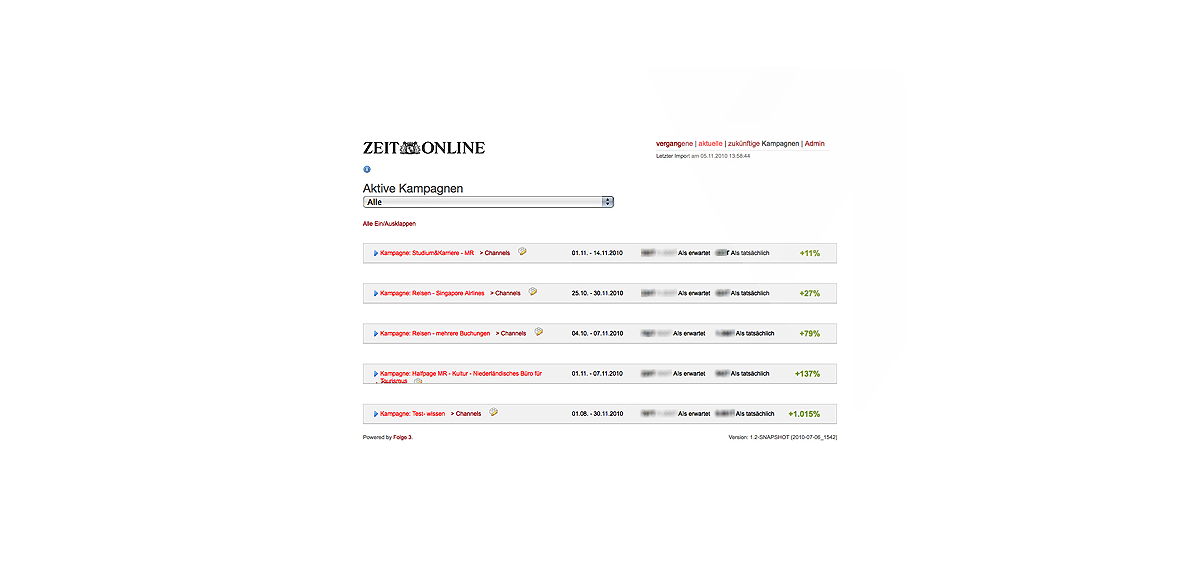ZEIT ONLINE Counters is the generic term for a series of tracking and analysis tools that capture the relevant online figures in near real-time. For ZEIT ONLINE, they represent a complement to web analytics tools such as Omniture or WebTrekk for its day-to-day work.
The counters are optimized for at-a-glance overviews. The key figures are presented graphically from different viewpoints. The results can then serve as a decision-making basis for further planning of tenders. All counters come with their own web and HTML5 mobile interface and can also be integrated into the CMS via a REST API.
ClickCounter: The ClickCounter counts the number of hits on the editorial pages of ZEIT ONLINE. The source is a web beacon. The hits for the article are evaluated every five minutes. The figures are graphically represented in five-minute intervals for the last hour and in one-hour intervals for the past 24 hours. Access is via a web interface, and programmatic access is possible via a REST API. ZEIT ONLINE also allows for integration into the CMS.
AdCounter: AdCounter counts the number of ad impressions for individual campaigns. The source is a web beacon. Campaigns can be defined in terms of time and be assigned to different channels. Values obtained are compared against expectations. The data are read every five minutes and are graphically represented. Furthermore, they are available down to the channel level. Past campaigns are archived.
TextCounter: The TextCounter gives information about the number of published articles per period/desk/author. The source is a Lucene SOLR index operated by ZEIT ONLINE. The search results are enriched with the corresponding values from the ClickCounter on an article basis.
Dashboard: The Dashboard collects the key figures from the individual counters and displays them graphically and textually. In addition, the current IVW (German Information Community for the Assessment of the Circulation of Media) data are integrated. To that end, the dashboard replaces the IVW Collectorbox at ZEIT ONLINE, which was taken down in 2011.
